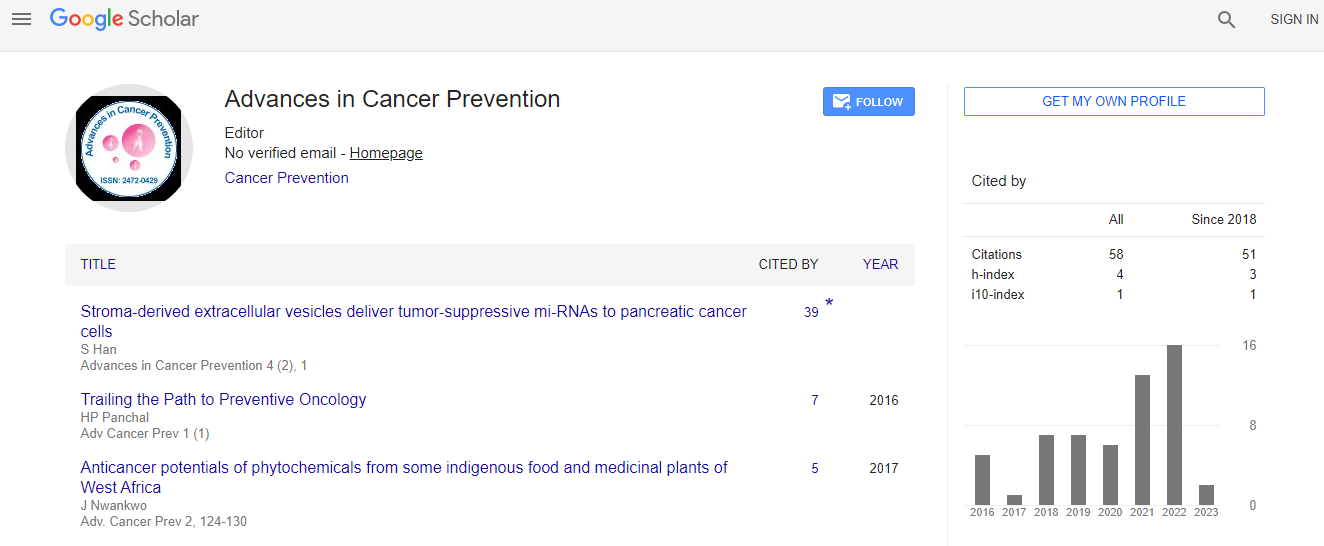Mini Review
Trailing the Path to Preventive Oncology
Harsha P Panchal*
The Gujarat Cancer and Research Institute, NCH Campus, Asarwa, Ahmedabad-380016, India
- *Corresponding Author:
- Harsha P Panchal
The Gujarat Cancer and Research Institute
NCH Campus, Asarwa, Ahmedabad-380016
Professor and Chief of Medical Unit
Department of Medical Oncology
The Gujarat Cancer and Research Institute
NCH Campus, Asarwa, Amdavad-380016, Gujarat, India
Tel: +917922688000
E-mail: drharshapanchal@gmail.com
Received date: November 07, 2015; Accepted date: January 07, 2016; Published date: January 25, 2016
Citation: Panchal HP (2016) Trailing the Path to Preventive Oncology. Adv Cancer Prev 1:104. doi:10.4172/acp.1000104
Copyright: © 2016 Panchal HP. This is an open-access article distributed under the terms of the Creative Commons Attribution License, which permits unrestricted use, distribution, and reproduction in any medium, provided the original author and source are credited.
Abstract
Cancer is one of the communicable diseases killing the mankind and is likely to be a global pandemic by year 2050. Fifty percent of cancers are preventable because of the causal association with modifiable risk factors. Preventive oncology is any measure that is taken to prevent development or progression of malignant process. Around one third of cancer deaths are due to the 5 leading behavioral and dietary risks: high body mass index, low fruit and vegetable intake, lack of physical activity, tobacco use, alcohol use. History of the science dates back to as early as 1912 when tobacco was coined as a culprit for lung tumors. Preventive oncology is very important not only because of its health impact but also for huge impact on economy. The total economic impact of premature death and disability from cancer was $ 895bilion in 2008 which is 1.5% of world’s Gross Domestic Product (GDP). More than 30% of cancer deaths could be prevented by modifying or avoiding key risk factors like tobacco use, obesity, unhealthy diet with low fruit and vegetable intake, lack of physical activity, alcohol use, sexually transmitted HPV-infection, infection by HBV, ionizing and non-ionizing radiation, urban air and water pollution, adulteration of food with harmful chemicals and indoor smoke from household use of solid fuels. Non modifiable risk factors like Genetic and hereditary risk factors play a role in 10% of cancers where mutations in susceptible genes are found as a part of hereditary cancer syndromes. There are various risk groups identified and risk models are available to target the population for the effective preventive measures in the community. Curtailing tobacco use, dietary and life style modification and avoiding chemical carcinogens as an occupational hazard are important aspects. Certain viruses are known to be carcinogenic. Prevention of transmission and vaccination for the same is important step forward towards prevention of diseases like hepatitis B/C and HCC, HPV and cervical and anal cancer. Screening for early detection of cancer is an important strategy for breast, cervical, lung, colorectal, prostate and skin cancers. There are chemo-preventive agents for risk reduction for certain risk groups like tamoxifen, raloxifen, aspirin, finasteride and vitamin D. Surgical risk reduction is recommended for certain genetic syndromes. Preventive oncology is the future of oncology as we come to know more and more about the etiological aspects, understand molecular epidemiology and molecular basis of the dreadful disease. This is the only way out to tackle the cancer which is slowly and silently becoming a pandemic.

 Spanish
Spanish  Chinese
Chinese  Russian
Russian  German
German  French
French  Japanese
Japanese  Portuguese
Portuguese  Hindi
Hindi 